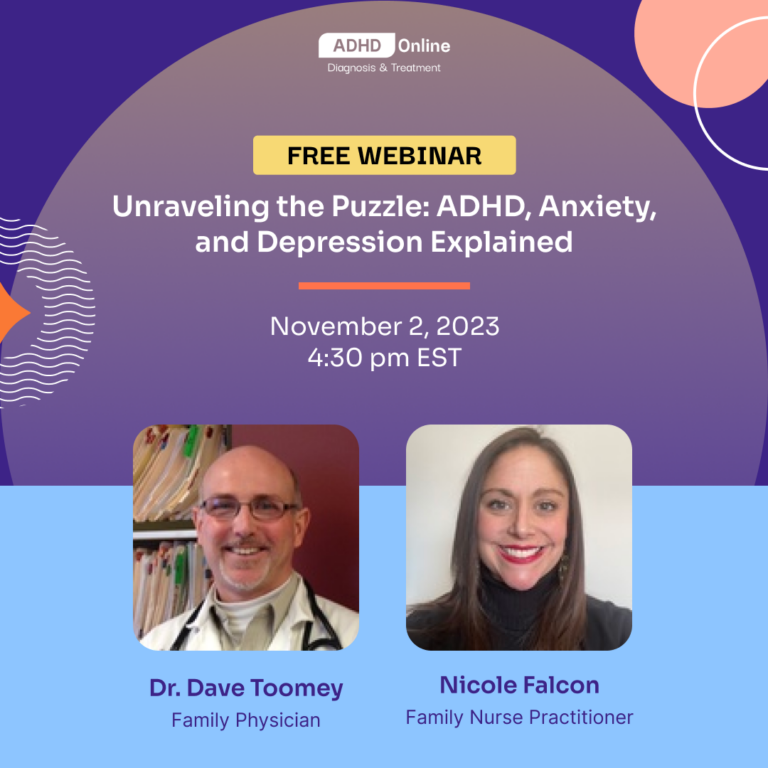By Brian Wu, MD, PhD
Whether it is the spring or the fall time change, switching the clocks can be difficult, particularly for the first few weeks until the body adjusts to the new schedule. However, for those with ADHD, this twice-a-year switch is particularly challenging. Fortunately, there are ways to make this time of year a bit easier to deal with.
Why is the Time Change Harder?
There are a number of reasons why the time change can hit harder if you have ADHD. First, ADHD is a risk factor for sleep disturbance. In a review of the relationship between ADHD and sleep in the journal Nature and Science of Sleep, the authors note that ADHD and sleep problems often go together. The researchers also note, however, that the exact relationship between poor sleep and ADHD remains unclear. In childhood and adolescence, the authors note, this can present as fragmented sleep, resistance to going to sleep and sleep onset insomnia. Later on, adults with ADHD can show up as having reduced amounts of rapid-eye-movement, or REM, sleep. They can also have more difficulty falling asleep and an increased number of nocturnal awakenings. And all of this occurs without throwing the time change into the mix.
What Can you Do to Make this Transition Easier?
ADHD can simply make sleep more difficult and setting the clock forward or back doesn’t help. However, there are a number of simple steps you can take to reduce the impact that this time change can have.
Talk to Your Doctor about Your Medication Regimen
Stimulant medication is a mainstay of treatment for many with ADHD. If you are on this type of medication, it might be necessary to adjust your current schedule to adjust to the time change. Discuss this change with your doctor first, however, advises the website for the non-profit Children and Adults with ADHD, or CHADD. It might be that your regiment needs to be altered.
Ease in Slowly
EverydayHealth.com recommends that instead of changing your schedule by an hour all at once, you ease in gradually and change it by fifteen minutes over the course of four days prior to the change. That way, it is not so much of a shock. In other words, if your regular bedtime is 10 o’clock, go to bed at 9:45 the first night, 9:30 the second night, etc., so that over the course of those four days, you will go back an hour. While this is helpful for anyone, it is particularly of use for those with ADHD.
Keep Your Routines
The website for the Brain Balance Centers — which offer a non-medical program to help children build and strengthen brain connectivity — suggests that whatever bedtime you have developed, stay with that routine even if you have to begin that routine at an earlier time. For instance, if you take a shower, do your yoga and read for a while before bedtime, don’t alter that now. And also make sure to include some low-key, wind-down activities before sleep and avoid anything that is too stimulating.
Be Patient
If your child has ADHD and you are trying to help them adjust, try to explain to them in terms that they can understand what the time change is and why you are having to adjust their bedtime. Even with easing in gradually, there still may be some crankiness for the first few weeks after the time changes. So patience is important, according to the Brain Balance Centers website. It is also important to understand that the sleepiness that comes from the time change might make some ADHD symptoms (such as working memory) a little worse, according to CHADD.
In short, the time change brings challenges with it, especially if you have ADHD and may have problems with sleep rhythms anyways. However, following these simple steps can help these twice-a-year changes go more smoothly.
Sources:
Nature and Science of Sleep: Sleep patterns and the risk for ADHD: a review
Children and Adults with ADHD: Spring Forward This Weekend
Everyday Health: ADHD and Daylight Saving Time: 5 Tips for Navigating the Time Change
Brain Balance: Parent Tips for Daylight Saving Time and Kids with ADHD




